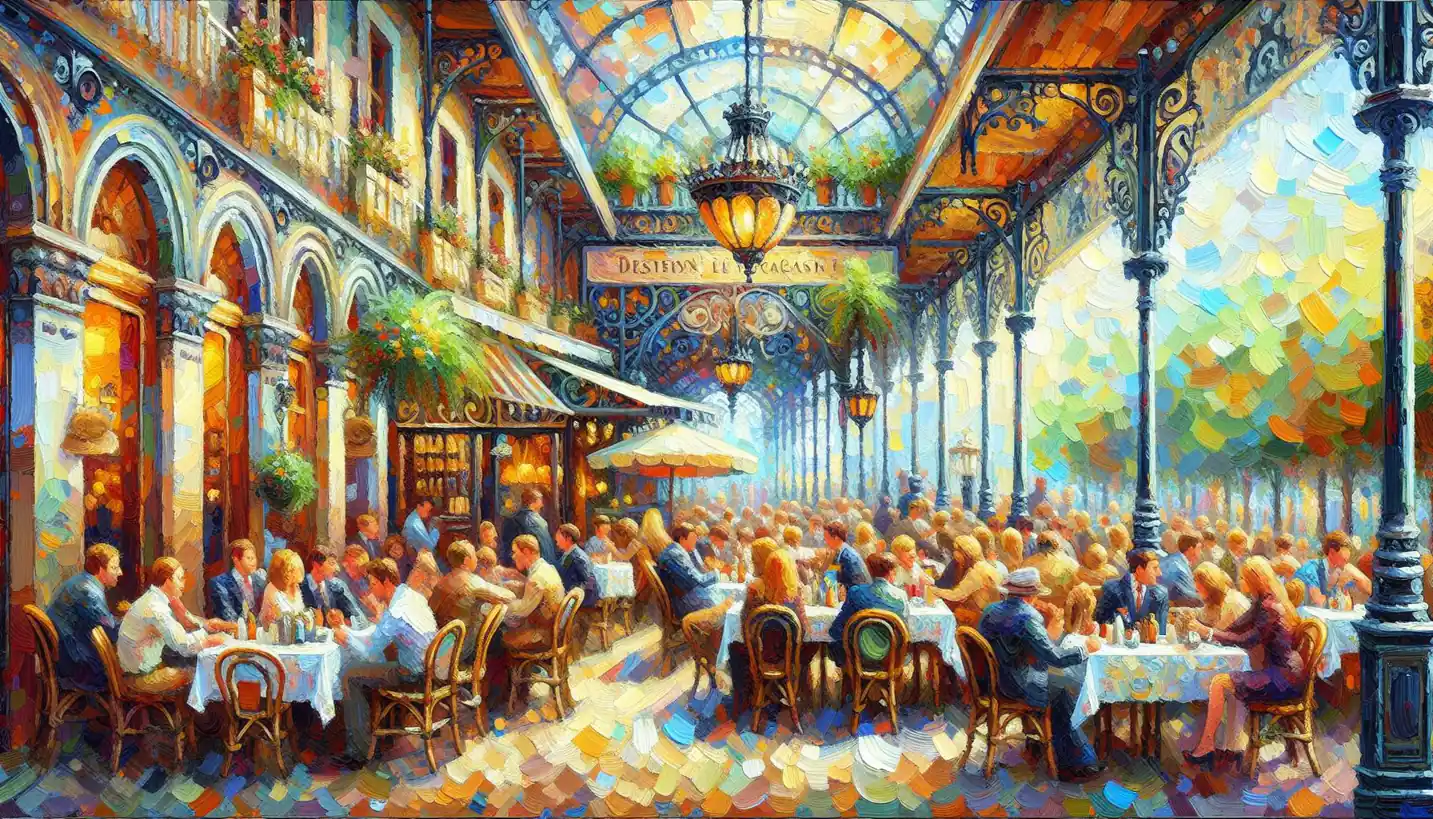· Art · 5 min read
Slip in Ceramics: Exploring the Liquid Magic of Clay
Slip in ceramics is like the magic potion that transforms clay into creative wonder. Dive into how this liquid element shapes artistic visions.

Ceramics, a fascinating world of creativity and craftsmanship, often revolves around a material known as “slip.” Slip might not be a term that pops up in everyday conversation, but within the realm of ceramics, it’s like a magic potion. It’s where art meets chemistry and takes pottery to another level.
Slip is essentially liquid clay. Picture clay watered down to a consistency not unlike that of thick cream. This transformation from solid to liquid opens up a world of possibilities for potters and ceramic artists. When clay becomes slip, it can be poured, painted, or even molded, turning the solid rock-like substance into a versatile medium for artistic expression.
What is Slip?
Slip is made by mixing clay and water, creating a slurry. Think of it like making a batter, where the dry ingredients are mixed with liquid to get just the right fluidity. The quality of slip can vary depending on the type of clay used, the amount of water, and any additional substances added to it, such as colorants or deflocculants—compounds that help manage the slip’s thickness.
Uses of Slip in Ceramics
The magic of slip lies in its wide array of uses. From decoration to construction, slip has carved its niche in the art of ceramics.
Slip Casting
One of the most common uses of slip is in slip casting. Imagine a jelly mold, but instead of jelly, it’s filled with slip. This process allows craftsmen to produce complex shapes that would be difficult, if not impossible, to create by hand. The slip is poured into a plaster mold, and as it dries and hardens, it takes on the shape of the mold. Once dried, you have a clay object ready to be fired.
Decorative Slip
Slip isn’t just about creating shapes; it’s also a key player in decoration. Often used in the form of slip trailing or painting, it allows artists to add intricate designs and textures to their pieces. With the right tools, slip can be drizzled or painted onto the surface of a vessel, creating patterns that become part of the ceramic once it’s fired. This technique gives ceramic artists a canvas that’s dynamic and fluid.
The Science Behind Slip
Slip isn’t just about creativity; there’s a bit of science too. The transformation of clay into slip involves understanding the properties of materials and their behavior under different conditions.
Colloidal Suspension
Slip is an example of a colloidal suspension, a mixture where fine particles are distributed within a liquid. The key to good slip is maintaining this suspension, which is why potters often use deflocculants. These help the clay particles spread evenly within the water, stopping them from clumping together and ensuring a smooth flow.
Chemistry of the Clay
Different types of clay have different properties. Porcelain, earthenware, and stoneware each interact with water in unique ways, affecting the slip’s characteristics. Understanding these properties allows artists to predict how the slip will behave when used, helping them achieve their desired results.
Historical Significance of Slip
Slip has a rich history in ceramics, with roots tracing back to ancient times. Early potters discovered that slip could be used to create decorative effects on pottery, a practice that has evolved over centuries. In ancient Egypt and Mesopotamia, slip was often used for painting intricate designs on vessels. By the time of the Greeks and Romans, slip had become a mainstream technique, adding both color and texture to pottery.
Modern Innovations with Slip
Today, ceramic artists are pushing the boundaries of what slip can do. Innovative techniques and creative approaches are leading to new forms and expressions in ceramics.
Slip in Contemporary Art
Modern artists are using slip in ways that would surprise the ancients. By combining it with other materials or using digital tools to design intricate molds, they’re creating pieces that challenge traditional notions of pottery. This blend of old and new has revitalized slip as a medium, allowing for even greater freedom and expression.
Environmental Considerations
With growing awareness of environmental issues, some artists are exploring sustainable practices in ceramics, including slip production. By sourcing local materials and minimizing waste, they’re finding ways to create beautiful art while reducing their ecological footprint.
The Importance of Slip in Ceramics
Slip is more than just clay in liquid form; it’s a cornerstone of ceramic art. Its versatility allows for both functional ware and artistic expression. Whether you’re drawn to the precision of slip casting or the freeform creativity of slip painting, there’s something enchanting about the way slip can transform a simple lump of clay into something extraordinary.
Looking forward, the use of slip in ceramics continues to evolve, driven by both technology and tradition. As artists explore new possibilities, slip remains a symbol of the endless potential of clay and the human imagination.
Slip in ceramics is truly a liquid world of possibilities. It connects history with modern technology and artistry, proving that even something as simple as clay and water can create wonders. Whether breaking new ground in contemporary art or reviving age-old techniques, slip continues to be a vital and vibrant element of the ceramic world.


